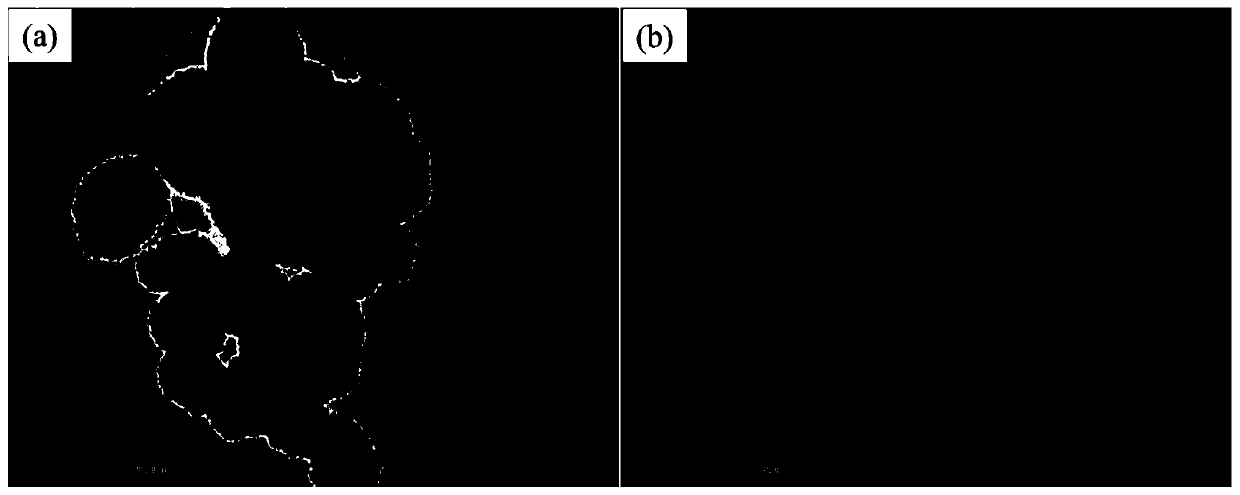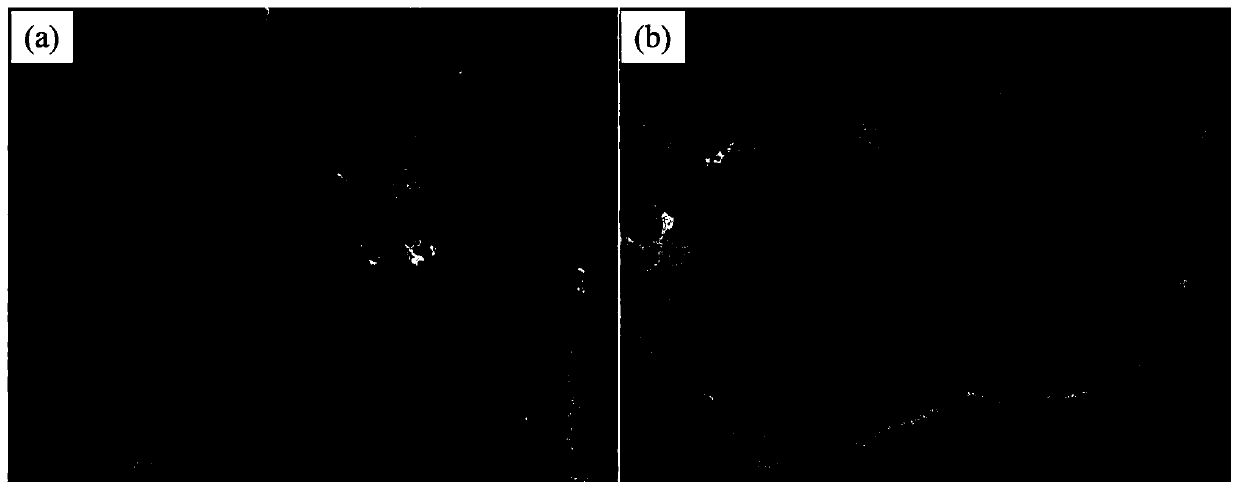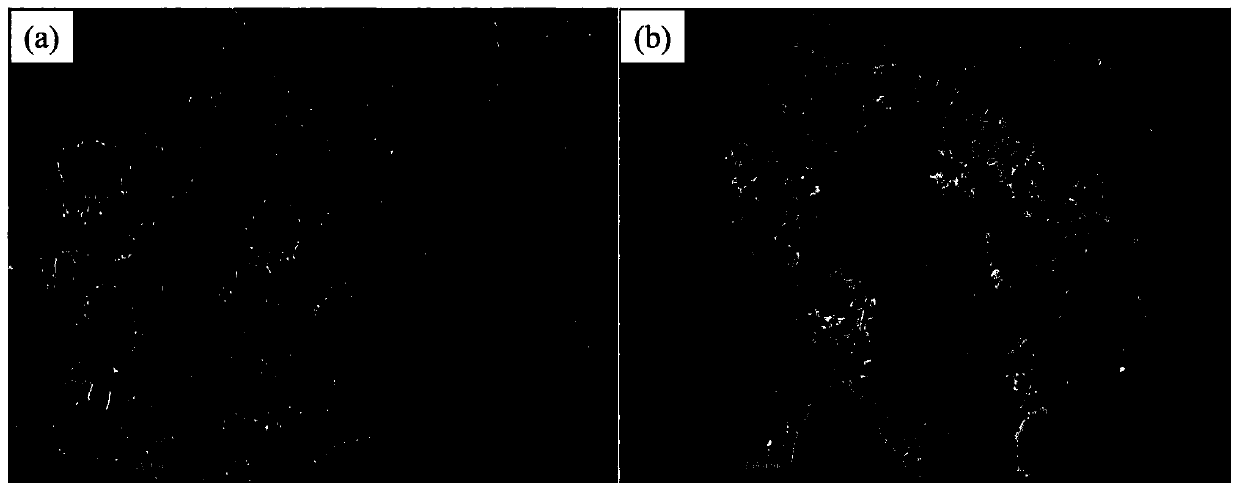Identification of Glycosylated Peptides Using Hydrophilic Nanocomposites Combined with Mass Spectrometry
A nanocomposite material and mass spectrometry analysis technology, applied in the field of enrichment and detection of glycosylated peptides, to achieve high sensitivity, high magnification, and good selectivity
- Summary
- Abstract
- Description
- Claims
- Application Information
AI Technical Summary
Problems solved by technology
Method used
Image
Examples
Embodiment 1
[0036] Embodiment 1: The synthesis of a hydrophilic nanocomposite material coated with poly(diallyldimethylammonium chloride) and nano-gold particles and modified glucose on the surface of a magnetic graphene
[0037] (1) Acidify graphene with concentrated nitric acid, disperse 400mg graphene in 40mL concentrated nitric acid, react at 60°C for 7 hours to obtain acidified graphene, and then fully wash acidified graphene with deionized water until the washing liquid is Until neutral, vacuum dry at 50°C;
[0038] (2) Add 150 mg of the acidified graphene obtained in step (1) to 40 mL of ethylene glycol, add 405 mg of ferric chloride hexahydrate, ultrasonically disperse for 1 hour, then add 0.15 g of trisodium citrate, 1.8 g of sodium acetate and 1.0 g of Polyethylene glycol, stirred at room temperature for 0.5 hours, then transferred the mixture to a polytetrafluoroethylene-lined stainless steel reactor, and reacted at 200°C for 12 hours to obtain magnetic graphene, and the produc...
Embodiment 2
[0047] Embodiment 2: The magnetic graphene surface that obtains in embodiment 1 coats poly(diallyl dimethyl ammonium chloride) and nano-gold particles and the hydrophilic composite nanomaterial that modifies glucose is applied to low-concentration horseradish Enrichment of oxidase HRP hydrolyzate and detection by MALDI-TOF MS
[0048] (1) Prepare standard proteolysis solution: Accurately weigh 1 mg HRP standard protein, prepare a standard protein solution with a concentration of 5 mg / mL with 25 mM ammonium bicarbonate solution, and boil for ten minutes; add dithiothreitol to make the two The final concentration of thiothreitol was 5 mM, reacted at 60°C for 1 hour, then added iodoacetamide to make the final concentration of iodoacetamide 12.5mM, and reacted for 1 hour at 37°C in the dark; then diluted with 25mM ammonium bicarbonate solution to make the final HRP The concentration is 1mg / mL, according to the ratio of trypsin and standard protein with a mass ratio of 1:40, add tr...
Embodiment 3
[0054] Embodiment 3: The magnetic graphene surface that obtains in embodiment 1 coats poly(diallyl dimethyl ammonium chloride) and nano-gold particles and the hydrophilic composite nanomaterial that modifies glucose as solid-phase microextraction adsorption separation The medium is used for the enrichment and MALDI-TOF MS detection of the mixed solution of HRP enzymolysis solution and bovine serum albumin (BSA) enzymolysis solution
[0055] (1) Prepare standard proteolysis solution: Accurately weigh 1 mg HRP standard protein, prepare a standard protein solution with a concentration of 5 mg / mL with 25 mM ammonium bicarbonate solution, and boil for ten minutes; add dithiothreitol to make the two The final concentration of thiothreitol was 5 mM, reacted at 60°C for 1 hour, then added iodoacetamide to make the final concentration of iodoacetamide 12.5mM, and reacted for 1 hour at 37°C in the dark; then diluted with 25mM ammonium bicarbonate solution to make the final HRP The conce...
PUM
 Login to View More
Login to View More Abstract
Description
Claims
Application Information
 Login to View More
Login to View More - R&D
- Intellectual Property
- Life Sciences
- Materials
- Tech Scout
- Unparalleled Data Quality
- Higher Quality Content
- 60% Fewer Hallucinations
Browse by: Latest US Patents, China's latest patents, Technical Efficacy Thesaurus, Application Domain, Technology Topic, Popular Technical Reports.
© 2025 PatSnap. All rights reserved.Legal|Privacy policy|Modern Slavery Act Transparency Statement|Sitemap|About US| Contact US: help@patsnap.com



